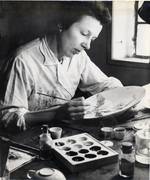1182990565
en
61123002597
product
https://www.kpm-berlin.com/products/urbino-sahnegiesser-gross
7762843173093
URBINO Sahnegießer, groß
119,00
https:files/16452000_URBINO_Sahngiesser_gross_6400x6400px_RGB_bead9840-a55c-477d-ac16-5eeea08be176.png
https:files/16452000_URBINO_Sahngiesser_gross_6400x6400px_RGB_bead9840-a55c-477d-ac16-5eeea08be176.png
EUR
InStock
Sahnegießer
479131664651
Alle Artikel
479128682763
Corporate Benefits
479370150155
KPM Freunde
497063002379
Porzellan
616907702539
Porzellansortiment I. Sortierung
480184074507
Regel [hidden]
512400032011
Tafelgeschirr
505118327051
Tafelzubehör
391947878629
URBINO
479144018187
Weiss-Artikel
URBINO
B
GIESSER
PA1:Tafelzubehör
PA2:Sahnegießer
SORT:Erste Sortierung
URBINO
WhiteCollectionSale
https:products/Placeholder-Produktfoto-14Pkt_261cb1b1-4ba6-4e82-af4a-39e9dbbef292.png
https:products/16452011_URBINO_Sahngiesser_gross_Platin_6400x6400px_RGB.png
https:files/1645202501_URBINO_Sahnegiesser_gross_MC-Eisenrot_6400x6400px_RGB.png
https:files/1645202502_URBINO_Sahnegiesser_gross_MC-Purpur_6400x6400px_RGB.png
https:files/1645202505_URBINO_Sahnegiesser_gross_MC-Mausgrau_6400x6400px_RGB.png
https:files/1645202507_URBINO_Sahnegiesser_gross_MC-Ocker_6400x6400px_RGB.png
https:files/1645201212_URBINO_Sahngiesser_gross_Canto_6400x6400px_RGB_366fd4d5-874f-43cd-aa8d-bf32a5e750d5.png
42852173316325
Weiss
119,00
https:files/16452000_URBINO_Sahngiesser_gross_6400x6400px_RGB_bead9840-a55c-477d-ac16-5eeea08be176.png
https://www.kpm-berlin.com/products/urbino-sahnegiesser-gross?variant=42852173316325
InStock
Weiss
43398846185739
[hidden] einfache Goldstaffage
159,00
https:products/Placeholder-Produktfoto-14Pkt_261cb1b1-4ba6-4e82-af4a-39e9dbbef292.png
https://www.kpm-berlin.com/products/urbino-sahnegiesser-gross?variant=43398846185739
InStock
[hidden] einfache Goldstaffage
42852170891493
einfache Platinstaffage
159,00
https:products/16452011_URBINO_Sahngiesser_gross_Platin_6400x6400px_RGB.png
https://www.kpm-berlin.com/products/urbino-sahnegiesser-gross?variant=42852170891493
InStock
einfache Platinstaffage
42852170989797
Farbrand HTS SCHWARZ (Canto)
139,00
https:files/1645201212_URBINO_Sahngiesser_gross_Canto_6400x6400px_RGB_366fd4d5-874f-43cd-aa8d-bf32a5e750d5.png
https://www.kpm-berlin.com/products/urbino-sahnegiesser-gross?variant=42852170989797
InStock
Farbrand HTS SCHWARZ (Canto)
42852171251941
Multicolore, einfache Goldstaffage, Fond EISENROT
379,00
https:files/1645202501_URBINO_Sahnegiesser_gross_MC-Eisenrot_6400x6400px_RGB.png
https://www.kpm-berlin.com/products/urbino-sahnegiesser-gross?variant=42852171251941
InStock
Multicolore, einfache Goldstaffage, Fond EISENROT
42852171481317
Multicolore, einfache Goldstaffage, Fond PURPUR
379,00
https:files/1645202502_URBINO_Sahnegiesser_gross_MC-Purpur_6400x6400px_RGB.png
https://www.kpm-berlin.com/products/urbino-sahnegiesser-gross?variant=42852171481317
InStock
Multicolore, einfache Goldstaffage, Fond PURPUR
42852171808997
[hidden] Multicolore, einfache Goldstaffage, Fond BLAU
379,00
https:products/Placeholder-Produktfoto-14Pkt_261cb1b1-4ba6-4e82-af4a-39e9dbbef292.png
https://www.kpm-berlin.com/products/urbino-sahnegiesser-gross?variant=42852171808997
InStock
[hidden] Multicolore, einfache Goldstaffage, Fond BLAU
42852172366053
[hidden] Multicolore, ein.Goldstaffage, Fond ZITRONENGELB
379,00
https:products/Placeholder-Produktfoto-14Pkt_261cb1b1-4ba6-4e82-af4a-39e9dbbef292.png
https://www.kpm-berlin.com/products/urbino-sahnegiesser-gross?variant=42852172366053
InStock
[hidden] Multicolore, ein.Goldstaffage, Fond ZITRONENGELB
42852172759269
Multicolore, einfache Goldstaffage, Fond GRAU
379,00
https:files/1645202505_URBINO_Sahnegiesser_gross_MC-Mausgrau_6400x6400px_RGB.png
https://www.kpm-berlin.com/products/urbino-sahnegiesser-gross?variant=42852172759269
InStock
Multicolore, einfache Goldstaffage, Fond GRAU
42852172890341
[hidden] Multicolore, einfache Goldstaffage, Fond GELBGRÜN
379,00
https:products/Placeholder-Produktfoto-14Pkt_261cb1b1-4ba6-4e82-af4a-39e9dbbef292.png
https://www.kpm-berlin.com/products/urbino-sahnegiesser-gross?variant=42852172890341
InStock
[hidden] Multicolore, einfache Goldstaffage, Fond GELBGRÜN
45388447711499
Multicolore, einfache Goldstaffage, Fond OCKER
379,00
https:files/1645202507_URBINO_Sahnegiesser_gross_MC-Ocker_6400x6400px_RGB.png
https://www.kpm-berlin.com/products/urbino-sahnegiesser-gross?variant=45388447711499
InStock
Multicolore, einfache Goldstaffage, Fond OCKER








